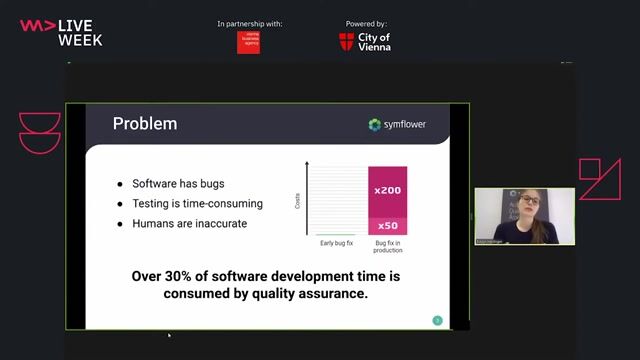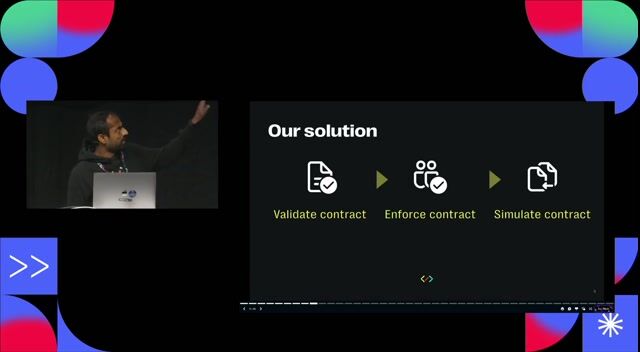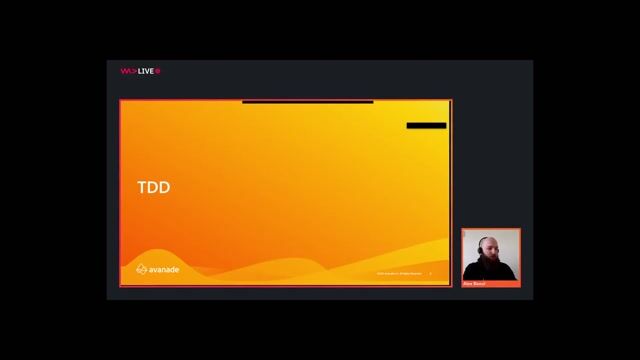Johannes Bergsmann & Daniel Bauer
Are you still programming unit tests or already generating?
#1about 1 minute
Moving from manual unit testing to automated generation
The goal of test generation is to move from manual coding to a low-code platform that improves requirements coverage and collaboration between developers, testers, and requirements engineers.
#2about 2 minutes
Extending black box testing into the unit test level
The testing pyramid shows how black box testing, which focuses on requirements and interfaces, can be extended into the unit testing level, traditionally dominated by white box source code analysis.
#3about 4 minutes
Using equivalence classes and boundary values for testing
Black box testing relies on equivalence class partitioning and boundary value analysis to systematically test value ranges and their edges, where errors frequently occur.
#4about 2 minutes
A maturity model for unit testing beyond code coverage
A proposed maturity model for unit testing progresses from having no tests to implementing a full strategy with risk analysis and black box methods, moving beyond simple code coverage metrics.
#5about 2 minutes
Why 100% code coverage does not guarantee quality
High code coverage is the minimum requirement, not the goal, as it doesn't ensure that requirements are met or that the right tests have been written.
#6about 2 minutes
The workflow of the DevMate test code generator
DevMate parses a project's source code, stores its structure in an intermediate JSON model, allows users to define test data in a UI, and then generates standard, versionable test code.
#7about 7 minutes
Using systematic test data to find hidden code defects
A demonstration shows how to define valid and invalid test data based on requirements, automatically combine them into test cases, and generate code that reveals missing input validations.
#8about 2 minutes
Creating unit and integration tests with a visual canvas
Visit Test is a new standalone, web-based tool that provides a visual canvas for designing test scenarios, decision flows, and integration tests before generating code.
#9about 8 minutes
Q&A on test goals, AI generation, and tool specifics
The discussion covers setting better testing goals, the limitations of using ChatGPT for systematic test generation, how the tool handles code changes, and its local-only processing architecture.
Related jobs
Jobs that call for the skills explored in this talk.
Featured Partners
Related Videos
 47:22
47:22Continuous testing - run automated tests for every change!
Christian Kühn
 43:07
43:07How not to test
Golo Roden
 40:16
40:16Using code generation for test automation – the fancy way
Roman Alexis Anastasini
 45:24
45:24How will artificial intelligence change the future of software testing?
Evelyn Haslinger
 26:02
26:02Contract Testing - How do you tame an external API that constantly breaks your tests
Vincent Hennig & Anupam Krishnamurthy
 17:56
17:56Metrics Handle with Care: The Paradox of Measuring Team Performance
Stefan Stelzer & Volker Zöpfel
 42:34
42:34How To Test A Ball of Mud
Ryan Latta
 30:55
30:55Why you must use TDD now!
Alex Banul
From learning to earning
Jobs that call for the skills explored in this talk.


Test System and Release Engineer (m/w/d)
AKDB Anstalt für kommunale Datenverarbeitung in Bayern
München, Germany
Intermediate
Senior
JavaScript
Automated Testing


Software Development Engineer in Test (m/w/d)
intersoft GmbH
Hamburg, Germany
Senior
Java
Automated Testing


Software Developer - (WMS, MFC)
TGW Logistics
Regensburg, Germany
Remote
Intermediate
Senior
Java
Scrum
Unit Testing
Test-Automation Engineer (m/w/d)
CodeCamp:N GmbH
Nürnberg, Germany
Azure
Cypress
Jenkins
Selenium
Test Case Design
+1
Software QA Engineer C# | Testpläne, UnitTests, Testautomation, TFS, Git, BDD | Inhouse (mwd) Software QA Engineer C# | Testpläne, UnitTests, Testautomation, TFS, Git, BDD | Inhouse (mwd)
Vesterling Consulting GmbH
München, Germany
€55-85K
GIT
ASP.NET
Unit Testing
Testmanager in der Software-Qualitätssicherung (m/w/d)
Codesys Group
Kempten (Allgäu), Germany
Project Management
Test Automation Engineer (m/w/d) - Codequalität auf Autopilot Test Automation Engineer (m/w/d) - Codequalität auf Autopilot
plusYOU GmbH
Hamburg, Germany
Remote
€55-63K
Java
REST
Selenium
+1
QA Engineer (Manual Testing Focus, Automation Experience a Plus)
Interactivated Solutions Europe
iOS
JIRA
Scrum
Python
Cypress
+3


